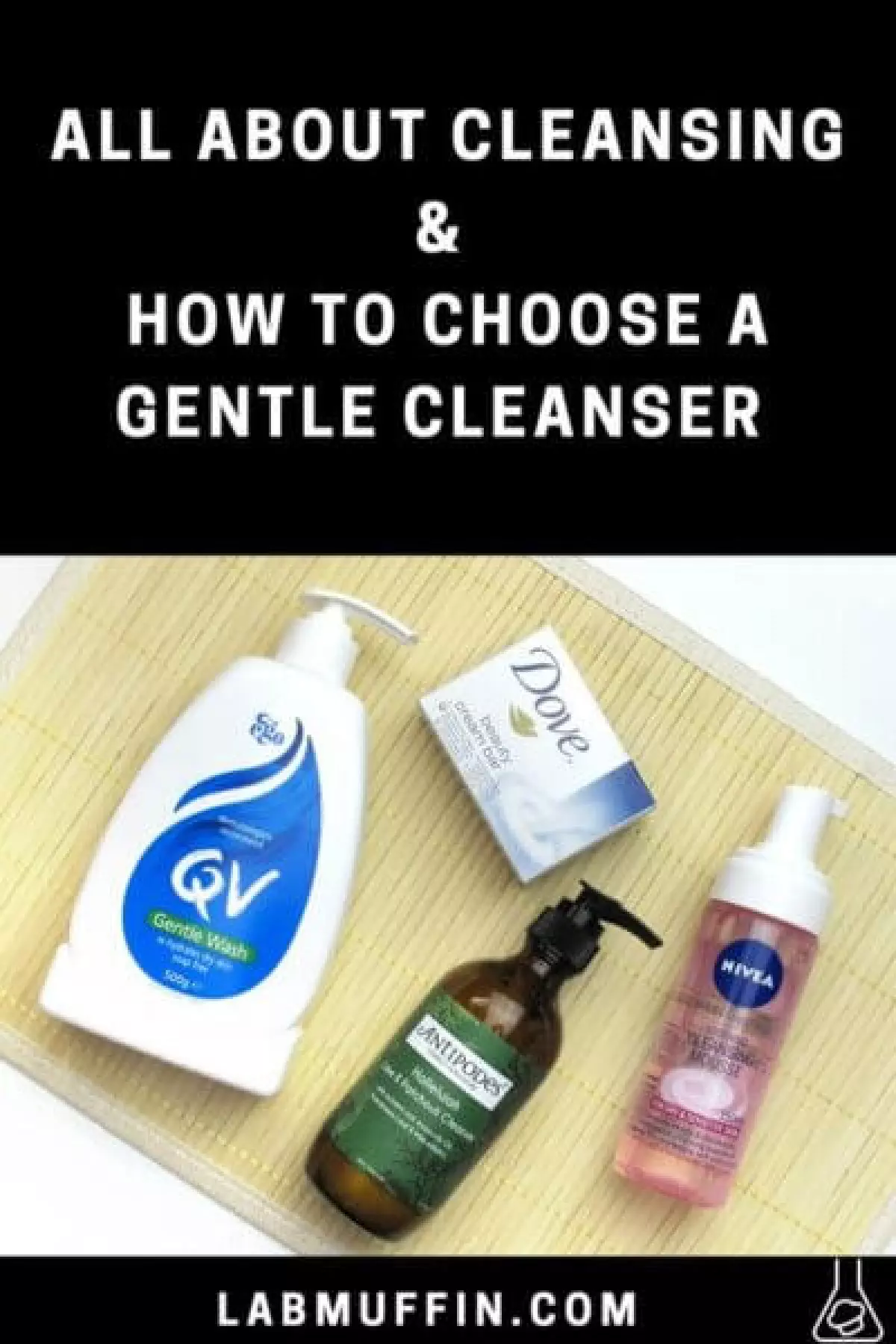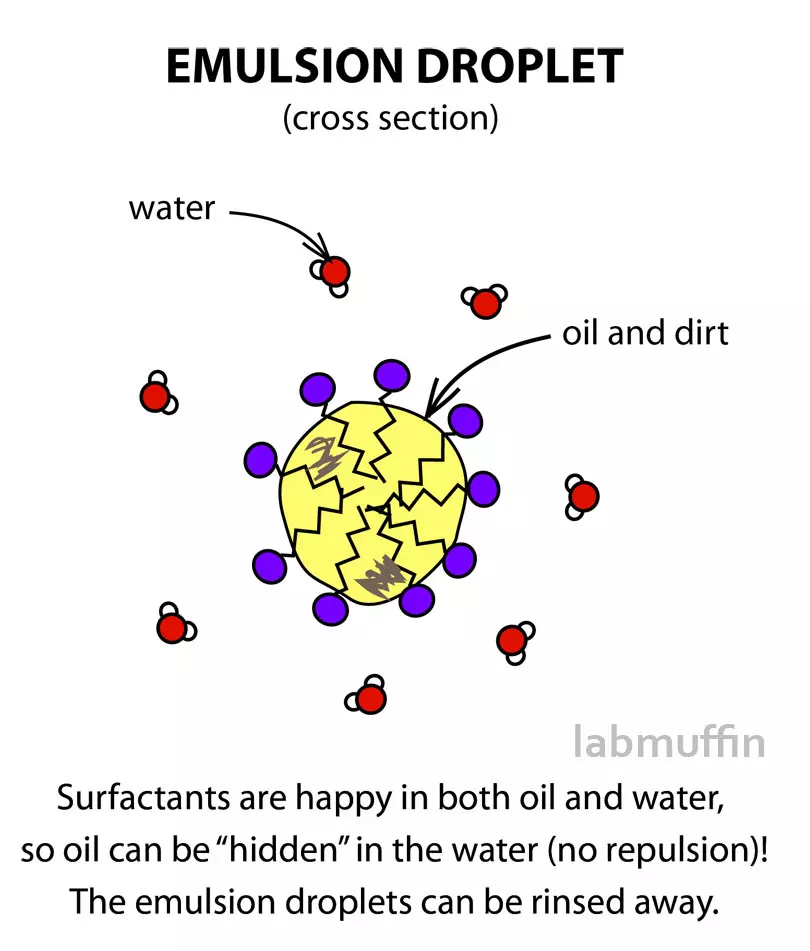Gone are the days of harsh cleansers that dried out your skin - everyone’s getting into gentle cleansers! Let's delve into the science behind gentle cleansing and learn how to choose the perfect gentle cleanser for your skin.
 Image source: shopmrkatin.vn
Image source: shopmrkatin.vn
How Cleansing Damages Your Skin
Cleansing is necessary to remove dirt, makeup, oil, and sunscreen accumulated on your skin throughout the day. However, most cleansers contain surfactants, which help dissolve grime in water and wash it away.
 Image source: shopmrkatin.vn
Image source: shopmrkatin.vn
While surfactants are great at lifting grime, they can be harsh on your skin. The outer layer of your skin, known as the stratum corneum or the "skin barrier," consists of dead, protein-rich skin cells filled with water-binding chemicals. These cells are surrounded by oily lipids, which form a barrier against water loss and external irritants.
Unfortunately, harsh cleansers can disturb the structure of the stratum corneum, leading to dryness, itching, flakiness, redness, and irritation. Here's how harsh cleansers can harm your skin:
Removes important stratum corneum components
Surfactants are excellent at removing grime, but they can't differentiate between the chemicals that make up your skin and those that shouldn't be there. They tend to remove lipids, proteins, and the skin's natural moisturizing factors, resulting in dry and dehydrated skin.
Causes irritation and disruption
After cleansing, some surfactants can bind to proteins in the skin, causing them to change shape and swell. Additionally, surfactants can remain in the lipid "mortar" of the stratum corneum, altering its structure. These effects compromise the skin barrier, making it prone to water loss and the entry of irritants.
Alters the pH of the skin
Skin is naturally acidic, with a pH around 5. Surfactant-containing cleansers can disrupt the skin's pH, hindering skin repair, causing swelling, reducing flexibility, and encouraging the growth of acne-worsening bacteria.
Picking a Gentle Cleanser
A good cleanser should effectively remove dirt without damaging your skin. Here are a few things to consider when choosing a gentle cleanser:
Specific surfactants
The surfactants used in a cleanser determine its harshness. Look for surfactants with larger head groups, uncharged or neutrally charged heads, and different tail lengths, as they tend to be milder. Harsh surfactants to avoid include soaps and sodium lauryl sulfate (SLS), while milder options include sodium laureth sulfate (SLES), sodium cocoyl isethionate, and alkyl sulfosuccinates.
Multiple surfactants
Mixtures of surfactants can make cleansers gentler. They tend to form larger micelles, reducing irritation, and preventing individual surfactant molecules from penetrating the skin.
Foam?
Contrary to popular belief, more foam doesn't necessarily mean a harsher cleanser. Some cleansers formulated to foam while remaining gentle can be moisturizing and effective in removing dirt and makeup.
pH
Cleansers with a lower pH (less than 6) are generally gentler on the skin. However, most cleansers don't disclose their pH, so further research or pH test strips might be necessary.
Moisturizing ingredients
Look for cleansers that include moisturizing ingredients like oils, fatty acids, lipids, and humectants to replenish what's lost during cleansing.
Antioxidants and soothing ingredients
Cleansers with soothing ingredients like vitamin E, allantoin, bisabolol, panthenol, and niacinamide can help minimize irritation.
Other Tips for Gentle Cleansing
In addition to choosing the right cleanser, here are some tips to ensure gentle cleansing:
- Use cooler water to prevent surfactants from penetrating the skin and stripping it of essential components.
- Use a minimal amount of cleanser to minimize damage.
- Avoid leaving cleanser on your skin for too long.
- Cleanse less frequently, especially in the morning, when splashing water on your face might be sufficient.
- If using wipe-off products, make sure to remove any surfactant residue.
- Follow up with a moisturizer to replenish moisture and nutrients to your skin.
My Gentle Cleansing Routine
As someone with oily skin, I've been trying various gentle cleansers to limit damage, especially during winter when my skin is prone to dehydration. Here are some gentle cleansers I recommend:
QV Gentle Wash
QV Gentle Wash is gentle, hydrating, and ideal for sensitive skin. It contains 15% glycerin to keep your skin moisturized, as well as mild surfactants that effectively cleanse without causing irritation. This fragrance-free cleanser leaves the skin feeling clean without any tightness.
Dove Beauty Cream Bar
The Dove beauty Cream Bar contains moisturizing ingredients like stearic acid and lauric acid, which adhere to the skin and provide hydration. With gentle surfactants and a pH of 7, it cleanses effectively without stripping the skin. It's an affordable option for those looking for a moisturizing body cleanser.
Hada Labo Gokujyun Super Hyaluronic Face Foam
Hada Labo Gokujyun Super Hyaluronic Face Foam comes in a self-foaming pump, making it convenient and effective. It contains hyaluronic acid and emollient fatty acids to moisturize the skin. Despite its mildness, it effectively removes makeup with just one pump.
Bioderma Sensibio H2O Micelle Solution
Bioderma Sensibio H2O Micelle Solution is the original micellar water designed for sensitive skin. It uses a surfactant traditionally used in leave-on products and is formulated with soothing humectants. It's a no-rinse cleanser that is suitable for lazy days or when tap water irritates the skin.
Heimish All Clean Balm
Heimish All Clean Balm is excellent for removing water-resistant makeup and sunscreen. This budget-friendly cleansing balm rinses off cleanly, leaving your skin refreshed. It's a relaxing addition to your cleansing routine.
Antipodes Hallelujah Lime & Patchouli Cleanser
Antipodes Hallelujah Lime & Patchouli Cleanser is a luxurious cream cleanser that effectively removes heavy makeup. With glycerin and beneficial plant oils, it moisturizes the skin while leaving it clean and refreshed.
Remember to consider your skin type and preferences when choosing a cleanser. Find one that suits your needs and complements your skincare routine.
 Image source: shopmrkatin.vn
Image source: shopmrkatin.vn
If you enjoyed this article and want to learn more about skincare, I recommend checking out The Lab Muffin Guide to Basic Skincare. It's a comprehensive guide to building a science-based skincare routine.
References:
- Epstein, HA. "Anatomy of a skin cleanser." Skinmed (2005).
- Walters, RM et al. "Cleansing formulations that respect skin barrier integrity." Dermatology Research and Practice (2012).
- Kuehl, BL et al. "Cutaneous cleansers." Skin Therapy Lett (2003).
- Ananthapadmanabhan, KP et al. "Cleansing without compromise: the impact of cleansers on the skin barrier and the technology of mild cleansing." Dermatol Ther (2004).
- Korting, HC and Braun-Falco, O. "The effect of detergents on skin pH and its consequences." Clin Dermatol (1996).
- McLachlan, A et al. "m-s-m cationic gemini and zwitterionic surfactants - a thermodynamic analysis of their mixed micelle formation." RSC Adv (2020).
- Walters, RM et al. "Designing cleansers for the unique needs of baby skin." Cosmetics & Toiletries (2008).
Note: The products mentioned in this article were provided for editorial consideration. This post also contains affiliate links that help support Lab Muffin financially at no extra cost to you. For more information, see the Disclosure Policy.

















